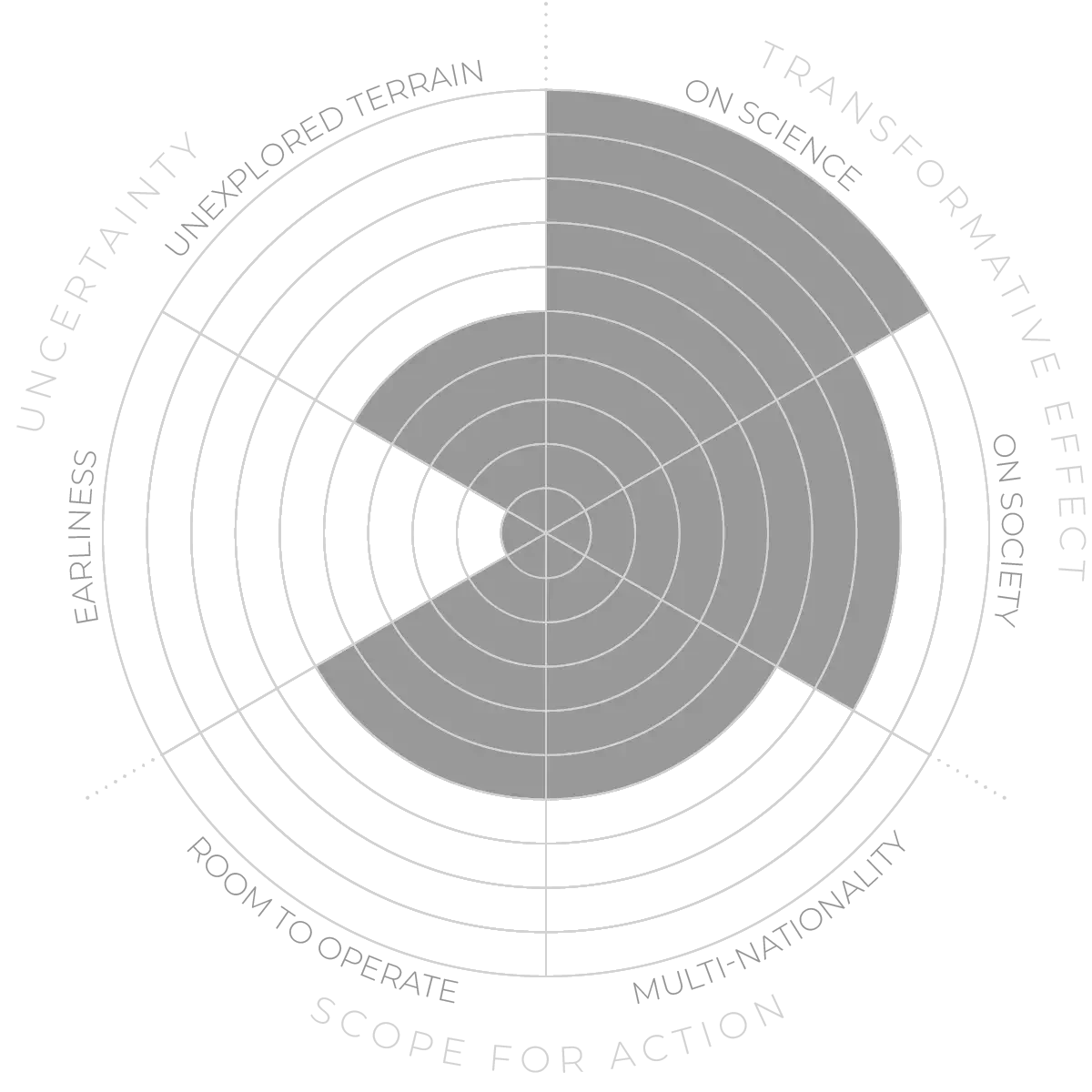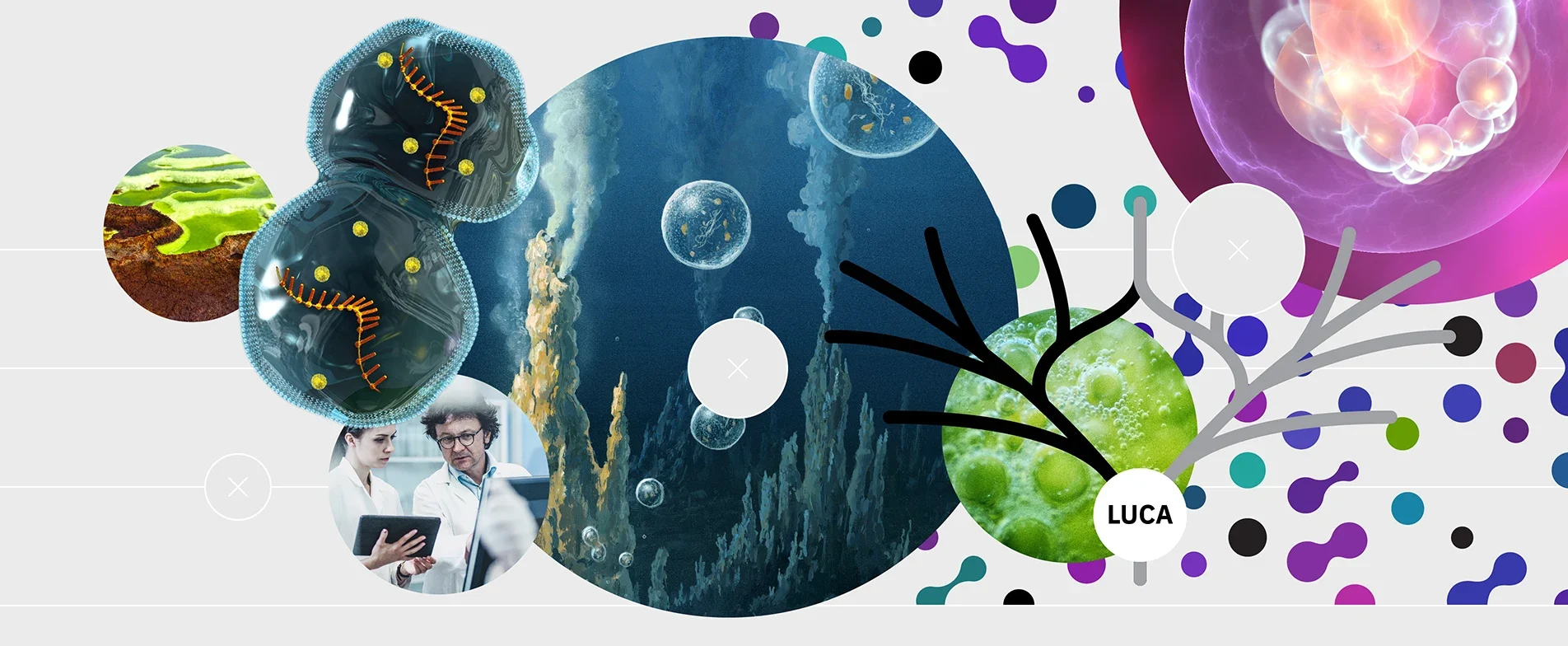Future Horizons:
10-yearhorizon
Extinct biomolecules are reconstructed
25-yearhorizon
Model of LUCA brings benefits
A key aim is to produce “emergent” properties, where the overall system has properties and functionalities that are not inherent in the individual parts but emerge from their interactions.15 One example would be self-organisation: systems of chemicals that can self-assemble into three-dimensional structures or reaction cycles, and which are on some level self-sustaining.
This move towards studies of complex systems presents a considerable analytical challenge. Modern experiments that seek origins for the emergence of life often involve set-ups in which dozens of chemicals, or even more, interact with one another. As a result, research is aiming to develop highly sensitive analytical techniques that can track the changes in these systems.16
Systems biology - Anticipation Scores
The Anticipation Potential of a research field is determined by the capacity for impactful action in the present, considering possible future transformative breakthroughs in a field over a 25-year outlook. A field with a high Anticipation Potential, therefore, combines the potential range of future transformative possibilities engendered by a research area with a wide field of opportunities for action in the present. We asked researchers in the field to anticipate:
- The uncertainty related to future science breakthroughs in the field
- The transformative effect anticipated breakthroughs may have on research and society
- The scope for action in the present in relation to anticipated breakthroughs.
This chart represents a summary of their responses to each of these elements, which when combined, provide the Anticipation Potential for the topic. See methodology for more information.



